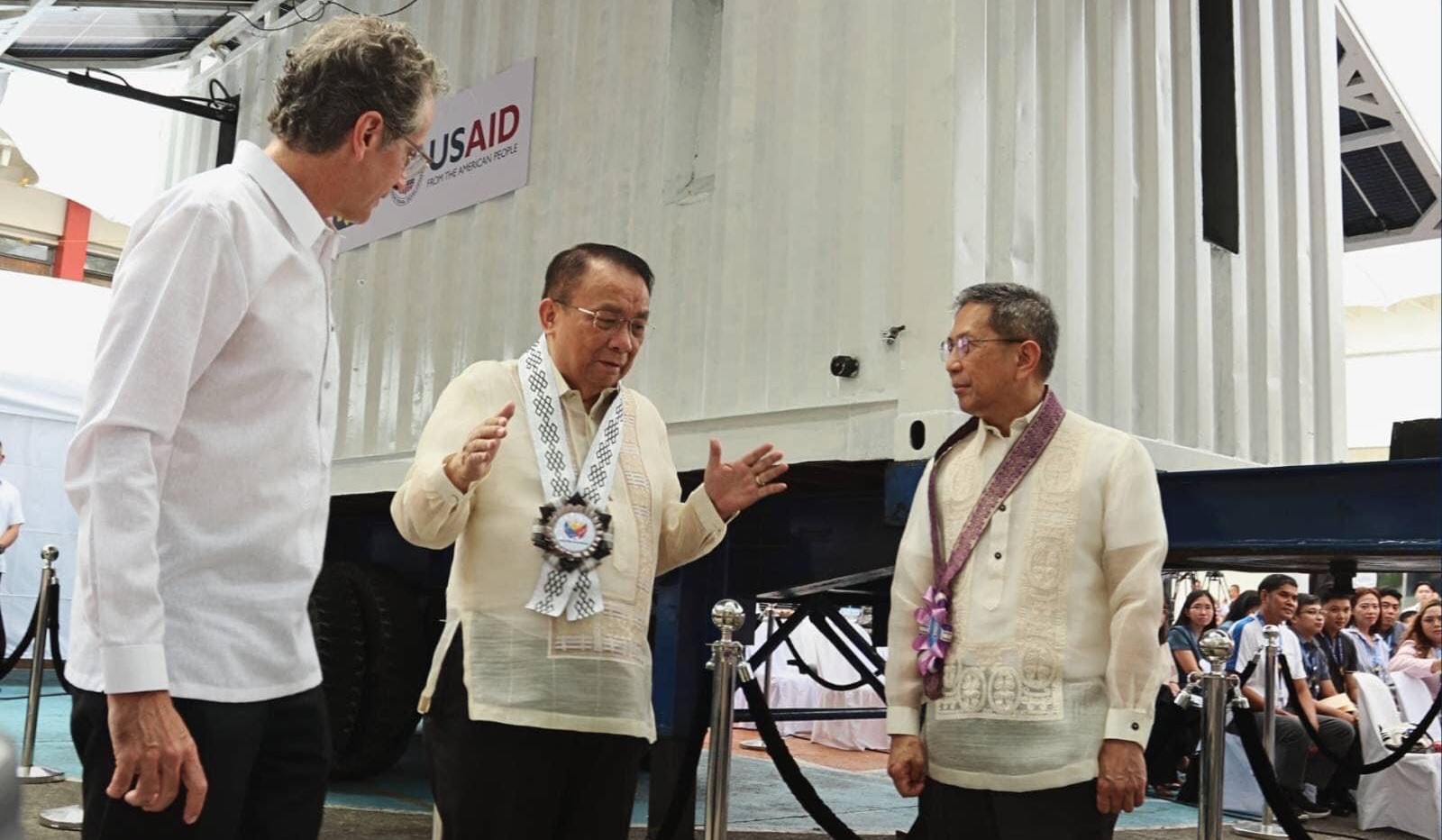New energy emergency center, mobile units to improve gov”t response to disasters, cyberattacks
By LLANESCA T. PANTI, GMA Integrated News Published April 15, 2024 5:15pm The government is expected to improve its response during natural disasters and cyber security threats with the inauguration of the Energy Sector Emergency Operations Center (ESEOC) and the Mobile Energy System (MES) in Taguig City. The Department of Energy (DOE) said the ESEOC […]


By LLANESCA T. PANTI, GMA Integrated News
The government is expected to improve its response during natural disasters and cyber security threats with the inauguration of the Energy Sector Emergency Operations Center (ESEOC) and the Mobile Energy System (MES) in Taguig City.
The Department of Energy (DOE) said the ESEOC and MES form part of the United States Agency for International Development’s (USAID)’s $34 million Energy Secure Philippines initiative with the Philippine government.
According to the DOE, the ESEOC is a centralized energy command hub “equipped with the latest technological innovations from Europe and the United States.”
The Energy Department said ESEOC is positioned to monitor, assess, and coordinate responses to various energy-related emergencies, including natural disasters, grid failures, and cyber security threats.
“By leveraging real-time data analytics and predictive modeling, the ESEOC enables proactive decision-making and rapid deployment of resources to mitigate disruptions and safeguard critical infrastructure,” the DOE said.

Meanwhile,the DOE said the MES would serve as a fleet of adaptable and scalable energy solutions designed for rapid deployment in emergencies.
“These modular systems incorporated renewable energy sources, energy storage, and microgrid technologies to provide reliable power generation and distribution in remote or disaster-stricken areas,” the agency said.
“As climate change escalates, extreme events will continue to come more often, even in greater intensity. Investing in proactive measures that enhance resilience and ensure the continuity of essential services is crucial. We thank the USAID Philippines for this enduring partnership that resulted in this significant breakthrough,” Energy Secretary Raphael Lotilla said.
USAID also turned over eight solar-powered MES units to the Philippine government via the DOE. These will be used by various government agencies and local government units.
Of the eight MES units, two are stationed at the DOE, one of which will be used as backup power for the ESEOC.
The rest of the MES units will be deployed between June and August of this year.
Each MES unit has a 50 kh battery storage and, upon full charging, would be enough to power two television sets, two air-conditioning units, 10 lightbulbs, two desktop computers, two laptops, five phone chargers, five electric fans, and one modem for almost 12 hours.
Compared to the conventional diesel generator set, the DOE said the MES can be easily deployed during emergencies at minimal operation and maintenance costs.
The cost of each MES unit ranges between P2.99 million to P5.25 million.—RF, GMA Integrated News














